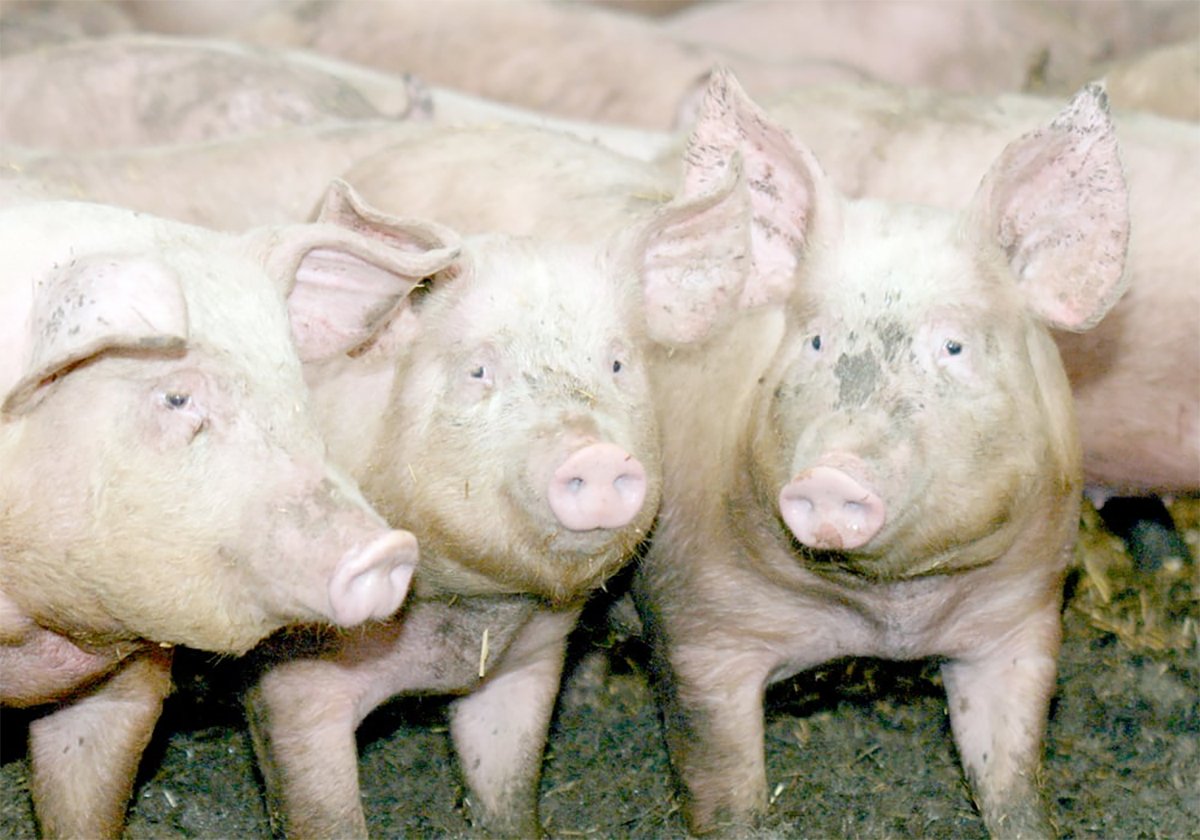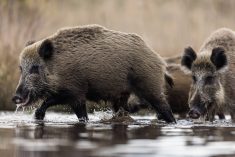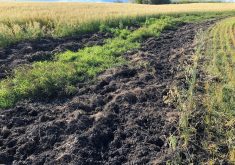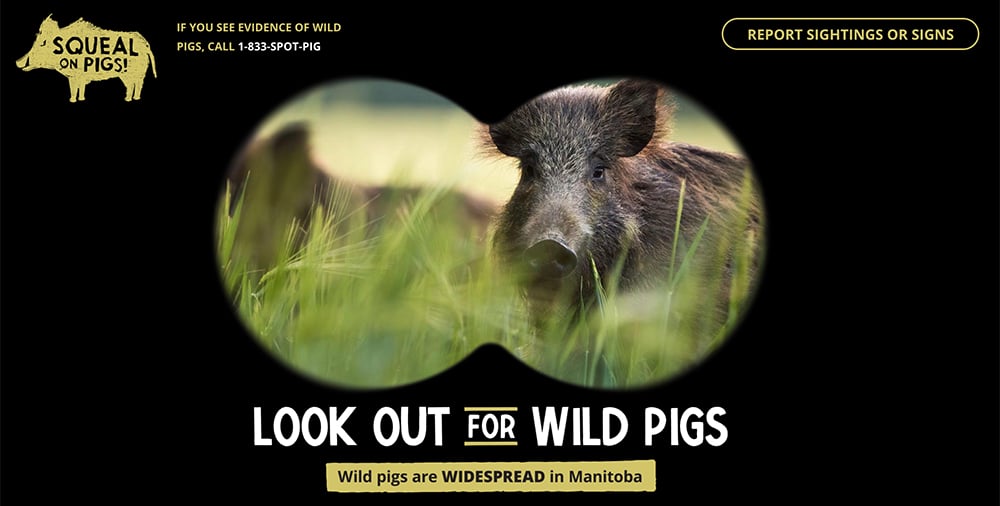A leading wild pig researcher from the U of S says the United States is worried about the invasive species spreading south
Ryan Brook’s wild pigs slide show contains a surprising logo, that of the U.S. Department of Agriculture.
It also contains the logos of other funders, including Canadian ones, for the University of Saskatchewan professor’s research.
But, as Brook noted recently in a presentation to the Manitoba Pork Council annual meeting, the USDA isn’t just one funder among many — it’s his biggest funder.
“Without this, I wouldn’t be here today. We wouldn’t have much about,” said Brook, who is Canada’s leading authority on the spread of wild pigs across the country, which is a particular problem in the prairie provinces.
Read Also

The Western Producer Livestock Report – November 13, 2025
Western Producer Livestock Report for November 13, 2025. See U.S. & Canadian hog prices, Canadian bison & lamb market data and sales insights.
Wild pigs are a hybrid of escaped domestic pigs and escaped wild boars. They have developed over recent decades, especially after the collapse of the wild boar farming industry in the early 2000s. Their numbers have been growing due to the high fertility of pigs and the ability of the animals to thrive in western Canadian conditions and in areas where farmers produce crops they can raid.
The animals are a worry to hog producers because they can become reservoirs for diseases like African swine fever. They are a concern for wildlife authorities because they can displace and disrupt numerous native species of animals and plants. They are a danger for farmers and other rural individuals because they are big, mean, aggressive and have sharp tusks.
USDA funding comes from that department’s concern about wild pigs spreading south from Western Canada into the U.S. Already, Brook said, pigs have been found along the border in some areas and have been found on the U.S. side, in places like the Turtle Mountains.
Wild pigs are also a menace in the southern Plains. Texas has more wild pigs than humans.
Canadian researchers have been working with U.S. researchers on the problem. A recent research paper was co-authored by two Canadian and four USDA researchers.
Brook describes it as “lots and lots of good collaboration and sharing of traps and resources and just lots of good discussion.”
The USDA has funded more than $1 million of Brook’s research, which accounts for everything his team has done in Manitoba as well as most of the work in Saskatchewan and elsewhere.
Sask Pork, the University of Saskatchewan and the Saskatchewan provincial government have also funded Brook’s research.
















